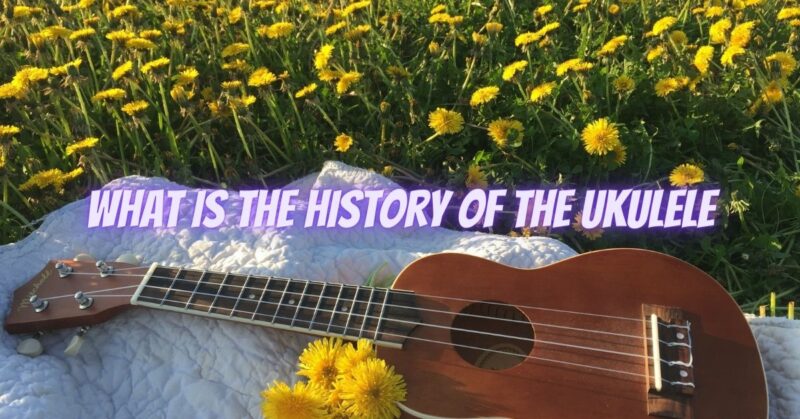The ukulele, with its distinct sound and playful nature, has become an iconic instrument associated with Hawaiian music and tropical vibes. Its history, however, traces back to the island of Madeira in Portugal, where it first originated. Let’s take a journey through time to explore the fascinating history of the ukulele.
Origins in Madeira:
The ukulele’s roots can be traced back to the 19th century when Portuguese immigrants traveled to Hawaii, particularly from the island of Madeira. These immigrants brought with them a small four-stringed instrument called the machete, which resembled a guitar. The machete, which evolved from similar European instruments like the cavaquinho and the rajão, served as a source of comfort and a reminder of home for these immigrants.
The Transformation in Hawaii:
As the Portuguese immigrants settled in Hawaii, the machete underwent some modifications and adaptations. The instrument’s name transformed into “ukulele,” which means “jumping flea” in Hawaiian, inspired by the rapid finger movements of the players. Portuguese cabinet makers in Hawaii played a significant role in refining the ukulele’s design and construction, making it more suitable for the local climate and cultural preferences.
Rise to Popularity:
The ukulele gained popularity in Hawaii during the late 19th and early 20th centuries. It became an integral part of the Hawaiian music scene, accompanying songs and dances. It captured the hearts of the locals, who embraced it as a symbol of their cultural identity and the aloha spirit. Musicians like Joseph Kekuku and Ernest Kaai played essential roles in popularizing the ukulele and showcasing its potential as a solo instrument.
Spread Across the World:
The ukulele’s popularity spread beyond the shores of Hawaii in the early 20th century. In 1915, the Panama-Pacific International Exposition in San Francisco introduced the ukulele to a wider audience in the United States. Visitors were captivated by its cheerful sound and ease of playability, leading to a surge in demand. It quickly became a craze, especially during the Roaring Twenties, when it was featured in Vaudeville performances and silent movies.
The ukulele’s popularity continued to grow globally throughout the 20th century. It found its way into various musical genres, from jazz and blues to folk and rock. Musicians such as George Formby, Arthur Godfrey, and Tiny Tim brought the ukulele into the mainstream, showcasing its versatility and unique charm.
Revival and Contemporary Impact:
After a period of decline in the mid-20th century, the ukulele experienced a revival in the late 20th century and beyond. In the early 2000s, YouTube and social media played a significant role in sparking a resurgence of interest in the instrument. Artists like Jake Shimabukuro, whose virtuoso performances went viral online, inspired a new generation of ukulele enthusiasts.
Today, the ukulele continues to be a beloved instrument worldwide. It is played by people of all ages and skill levels, from beginners strumming their first chords to professional musicians performing on stages around the world. Ukulele clubs, festivals, and workshops have sprung up globally, creating vibrant communities that celebrate the joy and camaraderie the instrument brings.
In conclusion, the ukulele’s journey from the Portuguese immigrants in Madeira to its rise as a symbol of Hawaiian culture and its global popularity is a testament to the instrument’s charm, accessibility, and ability to evoke happiness. Its unique sound and portability have made it a beloved musical companion for generations, spreading smiles and bringing people together through the universal language of music.


